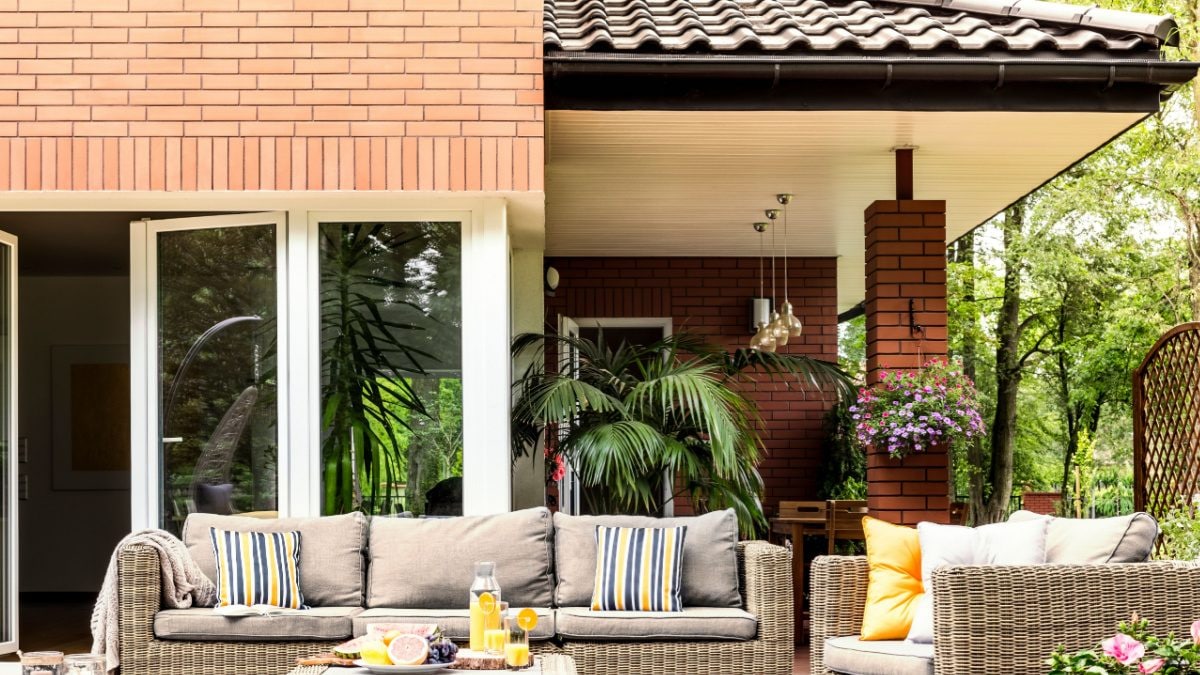Upholstery Care: Maintaining Your Furniture’s Fabric During Monsoons – News18
As the pitter-patter of raindrops fills the air and the earth gets drenched in a lush green hue, monsoons bring a refreshing change to our surroundings. While this season brings relief from the scorching heat, it also poses challenges for maintaining the integrity of your furniture’s fabric. The increased humidity, occasional downpours, and dampness can wreak havoc on upholstery, causing stains, odors, and even mold growth. But fear not! With the right knowledge and care, you can ensure that your furniture’s fabric stays pristine, even during the monsoons.
Shielding Your Furniture
Atif Shamsi , CEO & founder, Ouch Cart, says, “The first step in protecting your furniture from monsoon-related damage is prevention. Invest in high-quality waterproof or water-resistant furniture covers that fit snugly over your upholstery. These covers act as a protective barrier, shielding your furniture from direct exposure to rainwater and preventing moisture from seeping into the fabric. Ensure that the covers are properly secured to avoid water accumulation, which can lead to mold or mildew growth. With this simple step, you can significantly reduce the risk of damage caused by unexpected rain showers.”
Adequate Ventilation
Proper ventilation is crucial during the monsoons to prevent excessive humidity build-up, which can lead to unpleasant odours and mold growth. “Position your furniture in well-ventilated areas, away from damp walls or windows. If possible, create a gap between the furniture and the wall to allow air to circulate freely. This helps in reducing the chances of moisture being trapped around the upholstery. Consider using a dehumidifier or electric fan to maintain optimum humidity levels. Adequate airflow is essential in keeping your furniture fresh and dry, even when it’s pouring outside,” says Raghunandan Saraf, founder and CEO, Saraf Furniture.
Regular Cleaning
Regular cleaning is essential for preserving the beauty and cleanliness of your upholstery. Start by vacuuming your furniture at least once a week to remove dust, dirt, and any potential allergens that may have accumulated. Pay special attention to the crevices and corners where debris tends to accumulate. For stains, tackle them immediately using a mild fabric cleaner or a solution of water and gentle detergent. Remember to blot the stain gently rather than rubbing it vigorously, as rubbing may spread the stain or damage the fabric fibers. If you’re unsure about the best cleaning method for your specific upholstery material, consult the manufacturer’s guidelines or seek professional advice. By establishing a regular cleaning routine, you can prevent stains from setting and maintain the fresh and vibrant appearance of your furniture’s fabric.
Quick Drying Techniques
“Despite taking precautions, there may be instances when your furniture gets wet during the monsoons. In such cases, it’s crucial to dry it promptly to prevent moisture from seeping into the fabric and causing damage. Start by wiping away any excess moisture using a clean absorbent cloth. Then, place a few layers of dry towels over the damp area to soak up the remaining water. Utilize fans or open windows to enhance airflow and expedite the drying process. Avoid using direct heat sources, such as hair dryers or heaters, as they may damage the fabric. Be patient and allow the upholstery to dry naturally, ensuring that it’s completely dry before using or covering it again. By adopting quick drying techniques, you can prevent the growth of mold or mildew and protect the longevity of your furniture’s fabric,” opines Nidhi Aggarwal, Founder, SpaceMantra.
Protection from Sunlight Overexposure
Tejpal Singh Shekhawat, Founder & CEO, Kalyanam Furniture, adds, “While sunlight can aid in drying your furniture, prolonged exposure to direct sunlight can have adverse effects on fabric. UV rays can fade colours, weaken fibers, and cause premature aging. Position your furniture away from direct sunlight or use curtains and blinds to regulate the amount of light entering the room. If relocating your furniture is not feasible, consider using UV-blocking window films or sheer curtains that filter out harmful rays. Additionally, you can rotate the position of your furniture periodically to ensure even exposure to sunlight. By protecting your upholstery from excessive sunlight, you’ll maintain its vibrant colours and prolong its lifespan.”
Professional Upholstery Maintenance
Sometimes, despite your best efforts, upholstery may require professional care and maintenance. If you notice persistent stains, strong odours, or signs of mold growth, it’s advisable to seek the assistance of professional upholstery cleaners. They have the expertise and specialized equipment to deep clean and restore your furniture’s fabric effectively. Professional cleaners can also apply protective treatments to repel moisture and prevent stains, giving your upholstery an added layer of defense against monsoon-related damage. While professional maintenance may come at a cost, it’s a worthwhile investment to preserve the beauty and lifespan of your furniture.
As the monsoons bring refreshing showers, it’s essential to protect your furniture’s fabric from the challenges posed by increased humidity and dampness. By following these eye-catching upholstery care tips, you can ensure that your furniture stays in excellent condition throughout the rainy season, allowing you to enjoy the cozy and comfortable ambiance of your home, rain or shine.
For all the latest lifestyle News Click Here

